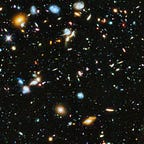Art Automated: The ethics of GEN-AI
I recall coming across a service called DALL-E during a daily doom scroll while on reddit. Having been part of certain fandoms where meme culture and fan art remain pervasive, it was but inevitable that I would come across this particular brand of media generation. It seemed fairly harmless to me at the time. The user gives a fairly innocent prompt and you get results accordingly, any deviations from what you imagined and it is probably because you weren’t descriptive enough. This would mean that now I could use GEN-AI to somewhat visualize the oftentimes outlandish things I imagine, all at the drop of a hat — and an accurate description of what I want (difficult to accomplish on a regular day).
Well then, why would one actually go through the trouble of commissioning artists and pay money for the art when I can come somewhat close to what I want to accomplish using GEN-AI? This is what I thought at the time, so did many others as is obvious.
Having established its use case, it would seem like the right time to address one of the foremost ethical issues with generative AI. The subject matter in question is, after all, a deep learning-based model. This means that services like this use art from actual artists — who remain uncredited — as the pool the models train itself on.
This means that these services which are predicted to be what replace actual artists in the future, also steal from the same reference material they would cease to exist without. It may seem profitable from a purely capitalistic point of view at first glance but is decidedly not.
These services replicate styles borne out of the actual human condition, something they heavily rely on to derive its aestheticism and impression — vibe so to say. If artists were to now close up shop in the face of emergence of such services, original reference material ceases to expand too and we get stuck in a loop of generated art and training material. Art stops evolving, loses its originality and hence no longer remains something people spend money on. Thus a major industry with huge revenue generating capabilities which also aids in tax evasions industry as a result loses its relevance. Now this doesn’t seem like something which does capitalism any service.
All of this is a major exaggeration to make it seem dramatic but some of it does hold true. Art but remains a major revenue generating avenue as the previous year has shown us. We also saw in real time what happened when actual professional artists quit their jobs and generative AI is forced to replace them — referencing the Writers Guild of America Strike — and the absolutely ghastly scripts which were produced as a result.
Further proving the downsides to this is the fact that these models get their idea of what something is supposed to look like based on the alt text assigned to it, which is often wrong. This leads to misinterpretations right from the baseline, causing an introduction of bias to the model as a result of mislabeling the dataset it trains itself on. This in turn causes obvious incorrect generations and at times fails to fit the prompt.
If one would like to look at it instead from a purely academic standpoint, these services at times include contrasting art styles — a certain art style from a certain age and one which belongs to a reactionary era as response against it. This means that certain conflicting ethos are put on the same canvas. As a result we end up with something which is a mixture of styles and techniques which would have never co-existed during their times, something which is almost blasphemous in nature.
There is a reason why there exist certain marked ages and times in art history. It is important for it gives us an anthropological view on the world in those times, by the means of available material and subject matter. Natural progression in thought and beliefs is visible in the art which evolves alongside it. Thus giving an idea of how we change and move forward as a civilization.
All of this would lose its meaning and significance if we were to solely rely on generative AI as a means to create “art”. It is indeed not all in fun and does have negative effects on the society and what we project ourselves as to our successors…a collection of dispassionate beings with lack of original thought.
In conclusion, generative art can be termed as rather stifling and constraining for creativity among mortals and the artistic environment. Art for ages now has been something that human beings use for expression and to communicate with their peers and those that come after. It has always been a very human thing, to introspect and philosophize via these means. So to lose this would not only be mean giving in to those intrusive thoughts, but would also mean that we lose the thing which gives an insider view of our personalities.
Oh and those scary looking portraits were obviously not real.
